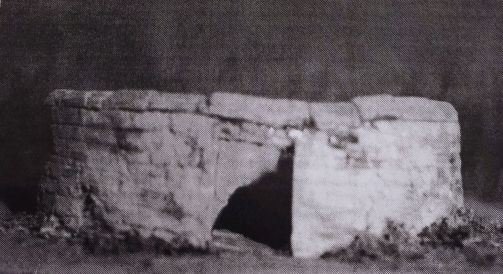Pilling Pinfold
By Mrs. Annie Higginson
Pilling, like most villages had its pinfold which was used to house and impound stock found straying in the village. Pilling's pinfold was situated at the end of the path opposite the Ship Inn. Unfortunately, its remains were destroyed a few years ago, but now, thanks to the efforts of the 'Best Kept Village' Committee the area has been cleared and the foundations defined.
The pinfold first appears on a map of 1734 and again on the 0.S. map of 1845, but by the time of the 1893 0.S. there is no mention, so it must have been abandoned some time prior to this date.
The custodian of the pinfold had the title of Pinder and was one of the Parish officers elected each year at the Manorial Court.
Richard Whiteside was pinder from 1807 - 1808
Robert Lamb was pinder in 1810
Robert Whiteside from 1811 - 1815
Before the days of wire fencing, many of the fields were unfenced which gave quite a problem with straying stock - especially onto the highway so that in 1807 the Manorial Court drew up the following bye-law:-
"We the jurors to remedy the evils aforesaid do make, ordain, order and determine that no person whomsoever shall in future turn swine, horses, cows or other cattle, or geese, into or upon any of the highways within the said Manor or permit or suffer the same to pasture or to be there on any account whatsoever between the hours of six o'clock in the morning and six o'clock at night, and on no part of the day or night unless the same be taken care of and tended by some old person to be hired at the expense of the owners of the goods for that purpose, but we strictly order and direct that no child or children shall on any account or under any pretence be permitted to look after such cattle in as much as such practice tend to hurt the morals of youth and bring them up in sloth and idleness." (1).

In front of the pinfold was a patch of grass which must have been the centre of village life. Here was the 'Bull Ring' to which bulls would be tethered to be attacked by dogs for the so called sport of bull baiting. Perhaps also the village stocks and the cockpit would be found here. To one side of the green was the old 'Golden Ball Hotel', and in front, the 'Old Bell', which was listed by Richard Harrison in his Survey of Pilling 1734 (now in the Preston Records Office) as "...a house of three bays, tenanted by Ann Bell". There is also listed a barn, two fields near the house, 15 acres on Boon Moss, the Pinfold, the next Pinfold and the further Pinfold. Would the next Pinfold be the plot of land across the road from the Ship Inn and the further pinfold the plot of land across from the Parish Church? Did the locals call Ann Bell "Owd Bell"? Is this why it is known as 'The Old Bell"? It was later converted into two or three cottages. A family by the name of Winchester lived in one. Their son, Bill, lived in the cottage after his parents died. He kept hens on the plot of land across from the Ship Inn.
For some time the old ' Pilling Band', after they moved from their band room over the Ship Smithy, used a small wooden shed built inside the remains of the pinfold
walls.
(1) David Weston. Parish Magazine, April, 1989.
